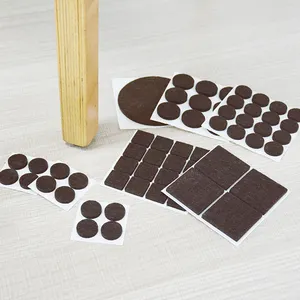Introduction to Felt Seal Strips
Felt seal strips are essential components used across various industries to create airtight, watertight, and thermal barriers. Made from high-quality felt material, they provide a reliable sealing solution for gaps and joints, ensuring optimal performance in applications ranging from automotive to construction. Their versatile nature makes them a popular choice among manufacturers, builders, and DIY enthusiasts alike. In this guide, we’ll explore the types, features, applications, and advantages of felt seal strips, showcasing why they are a must-have for effective sealing solutions.
Types of Felt Seal Strips
Felt seal strips come in several varieties, each designed to cater to specific sealing needs. Here are some common types:
- Adhesive Backed Felt Seal Strips - These strips feature an adhesive backing for easy installation on any clean surface, providing convenience for immediate applications.
- Non-Adhesive Felt Seal Strips - Without an adhesive layer, these strips are suited for areas where temporary seals are required or where adhesives may cause damage upon removal.
- Custom Cut Felt Seal Strips - Available in various sizes and thicknesses, these strips can be tailored to meet specific project requirements, making them ideal for unique applications.
- Natural and Synthetic Felt Seal Strips - Depending on the application, options made from natural wool felt or synthetic materials like polyester are available, providing varying levels of durability and resistance.
Applications of Felt Seal Strips
Felt seal strips find widespread usage across numerous applications due to their flexibility and effectiveness. Here are some key areas where they are commonly employed:
- Automotive Industry - Used to seal doors, windows, and hoods, felt seal strips help reduce noise and enhance insulation.
- Construction and Building - Ideal for sealing gaps in windows and doors, these strips help improve energy efficiency and prevent drafts.
- HVAC Systems - Felt seal strips ensure airtight seals on ductwork, preventing energy loss and maintaining optimal airflow.
- Furniture Manufacturing - Used in furniture assembly, these strips prevent noise and wear, enhancing the longevity of wooden pieces.
Features and Advantages of Felt Seal Strips
The features of felt seal strips contribute to their popularity and high functionality in various settings. Here’s why they are favored:
- Durability - With robust construction, felt seal strips resist wear and tear, making them suitable for both indoor and outdoor use.
- Thermal Insulation - These strips offer excellent thermal insulation properties, helping maintain temperature in enclosed spaces while reducing energy costs.
- Noise Reduction - Felt material absorbs sound, providing soundproofing capabilities that are especially beneficial in urban settings.
- Variety of Options - Available in multiple sizes, thicknesses, and colors, felt seal strips can be easily matched to different applications and aesthetics.















































